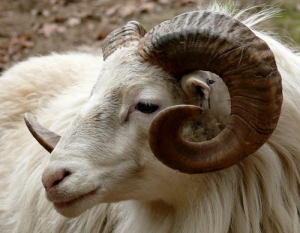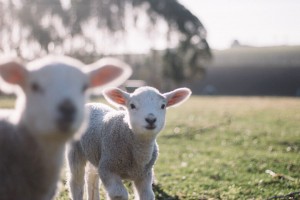9 Advantages of Using Wool Fiber
- Wrinkle-resistant; wool springs back quickly after stretching.
- Resists soiling; fiber forms a complex matting.
- Retains its shape; resilient fibers return to original size after washing.
- Fire resistant; fibers don't support combustion.
- Wool is durable; resists wear and tear.
- Repels moisture; fiber sheds water.
- Fabric is comfortable in all seasons; keeps a layer of air next to the skin.
- It's a great insulator; air is trapped between its fibers forming a barrier.
- Wool impedes heat transfer, making it good at keeping you cool too.

What are Some of the Uses of Wool?
The quality of wool produced by each breed of sheep is different and so is suited to a variety of uses. Sheep are sheared annually and their fleece is cleaned and spun into wool yarn. Knitting converts the yarn into sweaters, beanies, scarves and gloves. Weaving changes the wool into fine fabric for suits, coats, pants and skirts. Coarser wools are used to make carpets and rugs. The fibers can also be used to make blankets and comforters (duvets) which are warm and naturally cosy. It can be used for roof and wall insulation in buildings, and is used as an insulator for chilled-box food home deliveries. If the animal has been killed for meat, the entire skin can be used with the wool still attached. The un-sheared fleece may be used to make floor coverings or to produce decorative winter boots or clothing.

Why Is Wool a Good Fiber For Winter?
Wool sweaters are ideal for winter as they are provide insulation and at the same time allow for natural wicking of moisture. A synthetic fabric can trap your sweat next to the skin and make you feel sticky and uncomfortable. There are many different types and grades of wool. Wool for your sweater can come from sheep, goats, rabbit, llama or yak. You may know specific breeds of these, such as angora (rabbit), cashmere (goat), mohair (angora goat) and merino (sheep). Each one differs in softness, durability and washing characteristics.
Sheep's wool is the fiber most commonly used as it is often a by-product of meat production. The cheapest and coarsest fibers are used to make carpets. Only the longer and better quality wool staples are turned into clothing. Wool is naturally flame-retardant, and has a far higher ignition threshold than many other fibres. It will not melt and stick to the skin causing burns, and produces less noxious fumes that cause death in fire situations. Wool also has a naturally high level of UV protection.
Post time: Apr-06-2021

